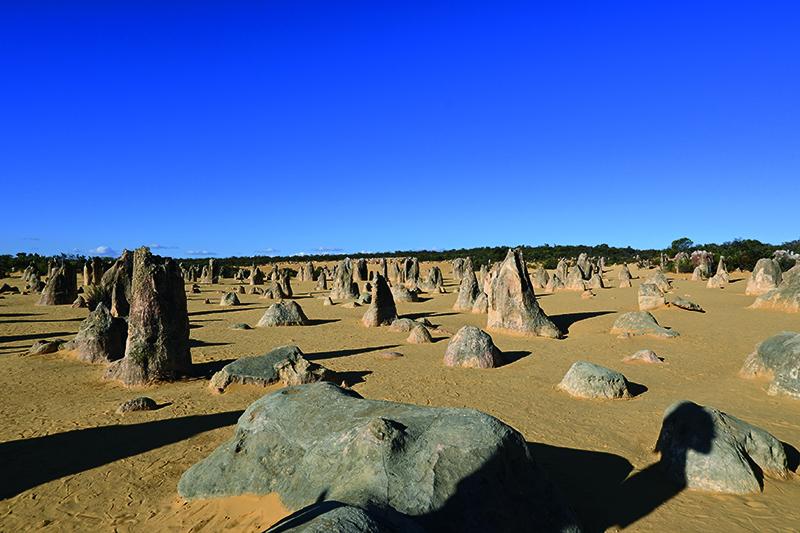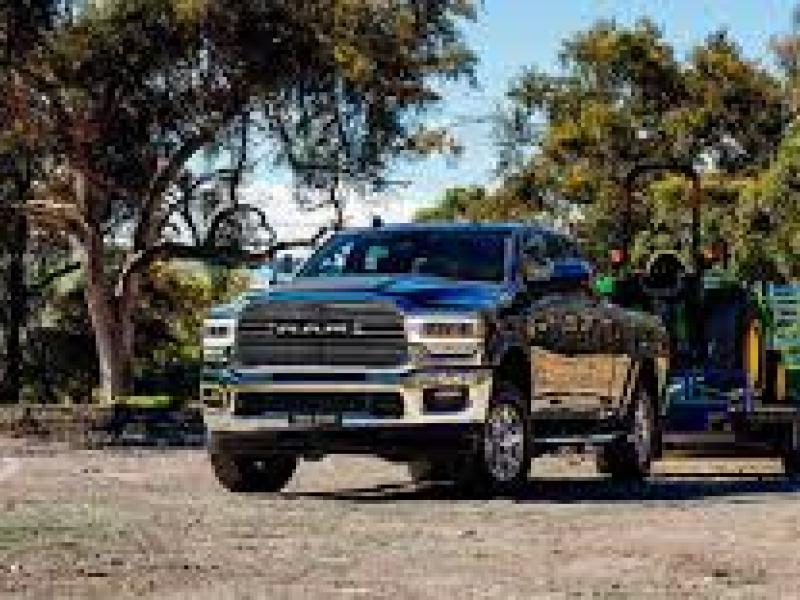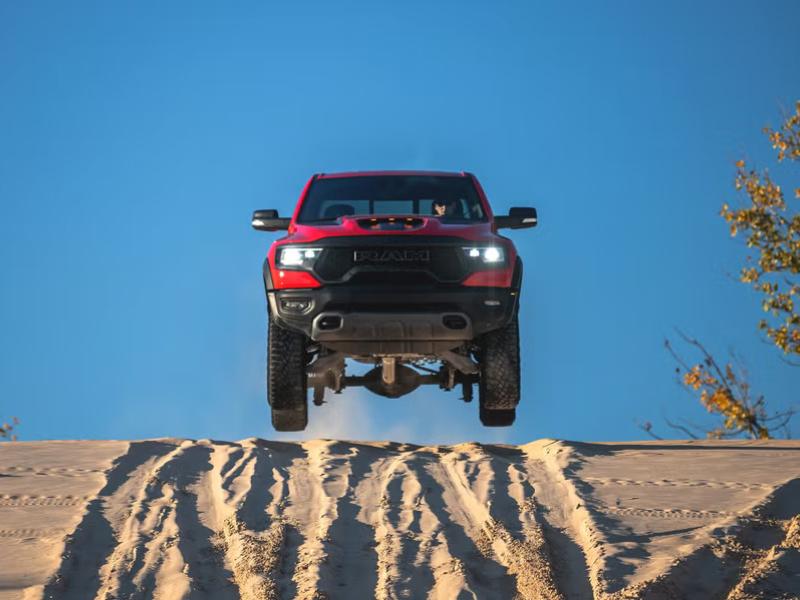A trip to the west coast of Australia has been on our bucket list for a few years now. So six months ago we decided to get serious and make it happen!
The main goals were to see the sights, swim with whale sharks and experience the outback. We decided on May 2024 – whale shark season, good settled weather (hopefully) and avoiding the June/July peak season. We also decided to end up in Broome to coincide with ‘Staircase to the Moon’ – a full moon phenomenon.
There were three of us: Klem and Sharon Christensen along with our son James. We are business owners, 4WD enthusiasts and keen campers who live in Taupo.
After some research and planning we settled on an itinerary from Perth up the west coast to Broome, a total of 21 days.
Auckland to Perth is a nice easy seven-hour direct flight which we did on a Sunday afternoon – leaving a frosty Taupo at 5.30am and arriving in a balmy 21-degree Perth at 4.00pm that afternoon. We caught an Uber to our motel, had a pub meal and hit the hay.
Day one of our adventure saw us up early for another Uber ride to our rental car destination. Handover was quick as we were familiar with Jayco caravans as we own a Jayco Silverline OB. This was a pop-top off-road caravan and even though we had some reservations never having used a pop-top it did the trick for three weeks – easy to set up, easy to tow.
After handover the first stop was Woolworths to stock up with supplies and then on to BCF (boating, camping, fishing) for a chilly bin, squid rods and a BBQ. We had no definite campsite booked for the night – we just wanted to get on the road and head north.
First stop was the Pinnacles NP, where we spent an hour walking around and taking in the impressive sight of these ancient limestone formations. Next stop was the “Lobster Shack” at Cervantes for a late lunch – a must do on the trip north. We thought we would head to Jurien Bay for the night to try out our squid rods at the jetty but the motorcamp was fully booked, so a quick search of Wiki Camps and we headed north another 20 minutes to a place called Sandy Cape – similar to a DOC camp – drive in, find an available spot then either pay online or into an iron maiden. Easy! This was a great place to stay the night right by the beach, set up was easy and went smoothly and the BBQ worked a treat. We were completely exhausted so we retired for an early night.
The morning started out at a fresh eight degrees and we were awake early, still being on NZ time. So we brewed a coffee and decided to try our luck fishing off the beach. As we walked over the dunes and down onto the beach we could see a ball of fish cruising along the shore. After a few casts James had caught his first WA fish – jury is still out on what it actually was, we think it was a whiting – but we filleted it and put it in the fridge for our dinner. So much fun and a great start to our WA adventure.
Now this holiday is an “active relaxing” holiday. We are covering a large amount of ground in a relatively short space of time, so this means we are generally moving on each day or so. It appears that most people get up, pack up and get on the road early to their next destination, especially if you are trying to secure a spot at a DOC-style camp on a first come, first served basis.
Day two was a 380km drive to Kalbarri – on the way we stopped in Geraldton for a few supplies then pushed north to the Pink Lakes/Hutt Lagoon. It was too windy to fly the drone to get a better view of the pink colour which is formed by a high concentration of algae that live in the water. We then checked into our caravan park and set up.
Day three was an early start to get out to the Kalbarri NP and experience the walks before it got too busy or too hot. We were hoping to catch sunrise at Nature’s Window but unfortunately were not early enough. There are quite a few small hikes out here and we did a couple of them, great views down into huge gorges and dry river beds. Next stop: Kalbarri Skywalk which overlooks the Murchison River. As the temperature heated up so did the flies. This was our first experience with the outback Aussie flies and they were insane. We ended up joining the other travellers and buying flynets that afternoon. We also completed a walk along the coastal walkway taking in the views of Red Bluff and all the other sights.
Day four was a 300km drive further north to Monkey Mia stopping off at Shell Beach, Eagle Bluff and Denham. Most of the motor camps allow an 11:00am check-in which worked out perfectly as we could set up camp and then go out exploring for the afternoon. The beach at Monkey Mia was stunning, no crashing waves or current – you might be forgiven to think you were swimming in a lake, except for the dolphins cruising 200m offshore and emus walking around the camp and beach foraging for scraps.
Each morning at 7.30am at Monkey Mia they have a dolphin feeding experience where you can watch the staff interact with the dolphins and feed the mothers who have calves with them. Afterward we packed up and headed to Wooramel Station – our first Aussie outback station stay. We camped beside the Murchison River – which is actually a dry riverbed due to the lack of rain. Each site is supplied with a firepit so we bought a bag of firewood from the office and cooked over the fire that night. You can also book dinner at the camp restaurant if you wish – the menu is different every night. After our dinner we wandered over to the Artisan spa pools to sit and relax and enjoy the live music playing outside the restaurant. It was too hot to sit in the spa pools during the day when the temperature was hitting 34 degrees.
An early start was on the menu the next day so we could secure a spot at the famous Quobba blowholes. We briefly called into Carnarvon for fuel and supplies. Again, this is a beach camp so you find a spot and then pay online – the Ranger comes around in the afternoon to check registrations and payment. Once set up we grabbed our snorkelling gear and hit the reef appropriately called “The Aquarium”. The water was warm and clear and had an abundance of fish life, a very popular place with campers and day trippers. A short distance from camp is the blowholes which were pretty spectacular at low tide – huge spurts of salty water, there were piles of salt all over the shore and rocks. That night, on the advice of our camp neighbours we tried squid fishing off the beach. After a couple of casts and a snag I caught my first squid! So much fun.
The next day we were off to Bullara Station, but first James was up early to try his hand at squid fishing – he was pretty miffed that I had caught one first! He succeeded and to his delight it was bigger than my squid. That is dinner for tonight sorted.
We travelled a total of 300km to Bullara Station – a very well set up station for travellers. After you check in you are escorted to your allocated camp site by a camp host on a pushbike. They then tell you where all the amenities are located and what there is to do around the station. We had a shared fire pit just across from us and our neighbour heard that we were keen for a fire that night so he offered to cook us an Aussie campfire dinner: chicken curry. What a treat, fantastic hospitality.
Bullara Station has an array of quirky outdoor showers and a well set up bar and restaurant. Again, you can book in for a set evening meal. Often their Friday burger night has 200 guests lining up. We headed over to the bar for the 4.30pm happy hour to meet other campers. A great social station with lots of families travelling around Australia with massive rigs and off-road caravans. These stations are generally only open from April – October during the winter “dry” season.
Day eight saw us with a free day to just chill and explore. We started with a coffee and scones at the Bullara café and then took a drive across the station to the Exmouth gulf. We then decided to grab our snorkelling gear and head approximately 100km south to Coral Bay. What an experience. The whole town is basically one big campground. And it’s busy. Travellers appear to book this place in advance (like a lot of WA) to ensure a spot. We let down the tyres of the rental car and hit the beach, driving over the sand dunes to a popular snorkelling beach called Five Fingers Reef.
After an epic afternoon of snorkelling and chasing turtles and wildlife around the reef we drove back over the sand dunes, aired the tyres back up and fuelled up. A quick stop to the liquor shop for a box of beer – $68.99 AUD for a box of 30 cans of XXXX beer.
Day nine was an easy 90km drive to Exmouth where we set up and stayed for three days to explore the region. Highlights included catching squid off the Bundegi Beach jetty, dinner at the Whalebone Brewery and a full-day snorkelling adventure on the Ningaloo Reef with the whale sharks. We also spent a day driving around the peninsula checking out the beaches and points of interest, snorkelling at Oyster Stacks, looking the Mildura Wreck site and Yardi Creek where you can book a cruise up the creek to spot the Black Footed Rock Wallaby.
Exmouth is a very interesting place with a lot of history. The local museum and aquarium are well worth a look, they document the history of the American Naval base in Exmouth. There is still a submarine communication station at the tip of the Exmouth Peninsula featuring 13 tall radio towers – quite impressive to drive past.
Day 12 was a driving day, covering 647km to the inland mining town of Tom Price, our base for two nights to explore the eastern side of Karajini NP. It sounds like a long way, and it is, but the driving was fairly easy. Long straight roads and changing scenery. We stopped at Bullara Station for coffee, pies and scones and then at roadhouses for fuel and to stretch our legs.
Day 13 was spent walking around Hammersley Gorge, Knox Gorge and Joffree Gorge, and finished with a spectacular sunset from the top of Mount Nameless overlooking the town of Tom Price and the Tom Price mine.
We then moved camps to Dales Campground which is located on the Western Side of Karajini NP. This is a completely off grid camping spot which you also need to book during the peak season. From here you can easily explore Dales Gorge, Fern Pool and Fortescue Falls. All beautiful and scenic. Lovely clear but cold water for a refreshing dip. During the night you could hear dingos howling around the camp and in the distance, so you need to exercise caution and not walk around the camp solo at night.
The next day we headed back to the coast via Port Hedland. We stopped off at the port to watch the huge ships being piloted in and being filled with Iron Ore from the surrounding mines. We counted a total of 17 ships out at sea waiting to come in and watched a 200 long carriage train arriving full of Iron Ore.
That night we were staying another 100km up the coast at Pardoo Station which had only just reopened after getting flattened on April 23 by Cyclone Ilsa. Lots of damage was still evident. Roofs off buildings and once tall vegetation lying flat. We loved it so much here we decided to stay a second night. The tides are huge here, 6-7m. So we went exploring the mudflats at low tide, keeping a wary eye out for crocs, but locals advised us they hadn’t seen any here for years. No luck with fishing but a very social evening around the nightly campfire sharing stories with other travellers.
The next camp was only a short hop up the coast – 150km, to 80 Mile Beach Caravan Park. Another great camping spot and very popular. You can drive along the beach, pull out your deck chair and relax. Again, huge tides and beach fishing is only possible at high tide, which we had just missed. We went for a walk along the beach where people were combing the beach for shells. A very popular place for finding huge shells hidden in the sand.
Day 18 was a 400km drive up the coast to our final destination of Broome. First stop on the way into town was the car wash where we queued for 40 minutes to give both the car and caravan a much needed wash.
Once set up at Cable Beach Caravan Park we unhitched and drove down to Cable Beach to explore. Again you can drive down onto the beach and drive as far as you can see. 4WDs parked up everywhere above the high tide mark.
Broome also has a lot of history and there are a lot of memorials around Broome documenting the early Japanese pearl divers to the bombing of Broome by the Japanese in WWII. We really enjoyed exploring Broome and agreed that two days wasn’t enough. We could have easily stayed here another two or three days. On the first night we went back to Cable Beach to watch the sunset and on the second night we headed over to town beach to watch the “Staircase to the moon” phenomena as the moon rose over Roebuck Bay. This is a hugely popular event with hundreds of people descending on town beach and attending the night market. Unfortunately for us it was a bit cloudy so not quite the experience we were hoping for – just another reason to return to Broome.
Our last day was spent packing and delivering the car and van back to the drop-off point and flying back to NZ via Perth.
For those that are interested in the numbers:
• We travelled a total of 4895km over 21 days.
• The total spend on diesel was $1601.27AUD and we used 713.5 litres – that is an average price of $2.24 per litre.
• The cheapest diesel was Dongara @ $1.93 per litre (Perth was $2.04 per litre) and the most expensive diesel was Broome @ $2.46 per litre.
We had an amazing holiday and would highly recommend travelling the West Coast of Australia. We can’t wait to go back as we only just scratched the surface.
By Sharon Christensen







